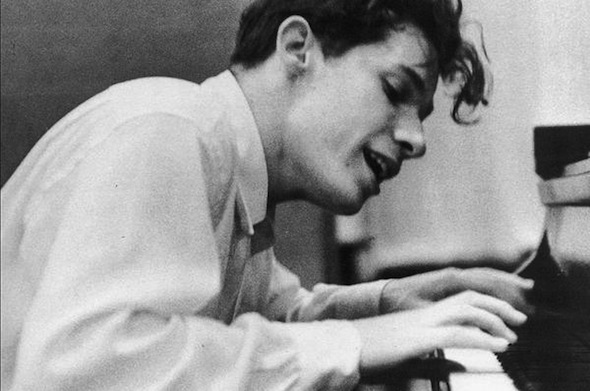30 Variations and a Microphone
 Glenn Gould has little to do with surf culture; even when it was warm, he wore “an overcoat, a beret, a scarf and gloves.” Nonetheless, the publication of an essay about Gould’s 1955 recording of Bach’s Goldberg Variations merits your attention, not least because its author is Paul Elie, who published a wonderful prosopography of American Catholic activists titled The Life You Save May Be Your Own. (Great title, great book.) This weekend’s New York Times Magazine includes an excerpt from his new book Reinventing Bach, which will be published in the United States on September 18. A little taste:
Glenn Gould has little to do with surf culture; even when it was warm, he wore “an overcoat, a beret, a scarf and gloves.” Nonetheless, the publication of an essay about Gould’s 1955 recording of Bach’s Goldberg Variations merits your attention, not least because its author is Paul Elie, who published a wonderful prosopography of American Catholic activists titled The Life You Save May Be Your Own. (Great title, great book.) This weekend’s New York Times Magazine includes an excerpt from his new book Reinventing Bach, which will be published in the United States on September 18. A little taste:
The “Goldberg” Variations is a piece of architecture. Gould is climbing over Bach’s construction, clambering over the whole.
Gould used the studio, first of all, to give full expression to the variety of the parts. By recording the variations one at a time, in multiple takes, he set them apart from one another, exaggerating their individuality. Each of them can be considered with wonder. But something is lost when the variations are taken apart — sold separately, as it were. Gould recognized this as well, and even as he used technology to isolate the parts, he used his technique as a pianist to make them whole.
There is no piece of music whose history is so divided into “before” and “after” by one performer as the history of the “Goldberg” Variations is divided into before and after by Glenn Gould. And few artists have been so good at presenting a self-image and making it central to their art. But Gould went further: he imprinted his image of himself onto Bach. This is a good measure of Gould’s achievement — that he made an unlikeness seem a likeness.
To read the rest of this essay, click here. And, by all means, if you haven’t heard Gould’s two recordings of The Goldberg Variations—the second was released in 1981—I urge you to do so. Here’s an Amazon link; here’s an iTunes link. Back to our regularly scheduled programming tomorrow.




